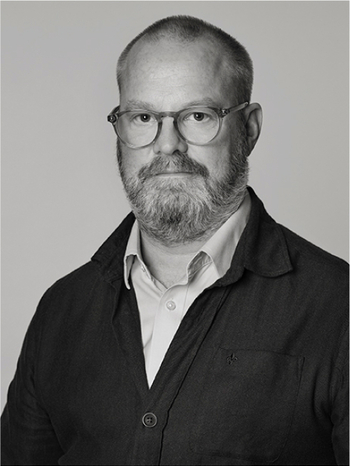August Jernberg
Man med skägg och pälsbrämad rock, möjligen Hermann Arminius (BC 18/17 -21 AD)
Signerad A. Jernberg och daterad 1857. Utförd i Düsseldorf. Duk 60 x 50 cm.
Proveniens
(Perhaps) Civil Engineer Herman A. Nylén (1844-1939), Stockholm
The Swedish actress and singer Zarah Leander (1907-1983)
her deceased estate, sale Bukowskis, november 1983, no. 86
Gunnar Unéus, Djursholm, Stockholm;
thence by descent until 2018
Utställningar
(Perhaps) Stockholm, Konstnärshuset, August Jernberg. Minnesutställning, 1927, under 1857, ”Gubbhuvud” (Head of a Man) (lent by Civil Engineer Herman A. Nylén, Stockholm)
Övrig information
This powerful and freely painted image, clearly inspired by 17th century Baroque painting, is unprecedented in the artist’s œuvre. A genre and portrait painter in the Düsseldorf tradition, Jernberg excels in this picture far beyond his more traditional forms of expression.
Jernberg probably intended the painting to depict a known historical figure, or more accurately, convey the idea of an actual historical person or a specific historic period. The model’s features firmly places him in the northern hemisphere. His outfit - a fur trimmed coat richly lined - suggests that he was a person of importance, most likely a chieftain. A look at German history and events that took place during the mid-nineteenth century, perhaps shed light on the sitter’s identity.
The concept of a German ethnicity is linked to Germanic tribes of antiquity in central Europe. The early Germans originated on the North German Plain as well as southern Scandinavia. Roman emperor Augustus in 12 BC ordered the conquest of the Germans, but the catastrophic Roman defeat at the Battle of the Teutoburg Forest in 9 AD, in which three Roman legions were destroyed by an alliance of Germanic tribes under the command of Hermann Arminius, resulted in the Roman Empire abandoning its plans to conquer Germania. Arminius' victory has been considered one of the most decisive battles in history and a turning point in world history. Although much of Germania remained free of direct Roman rule, Rome deeply influenced the development of German society, especially in their adoption of Christianity. Christianity would later become a major influence in the development of a common German identity. The first major public figure to speak of a German people in general, was the Roman figure Tacitus in his work Germania around 100 AD.
The Napoleonic wars were the cause of the final dissolution of the Holy Roman Empire, and ultimately the cause for the quest for a German nation state. After the Congress of Vienna in 1815, Austria and Prussia emerged as two competitors. German nationalism became the sole focus of the German Question, which was the question of how Germany was going to be best unified into a nation state. The idea of unifying all German-speakers into one state was known as the Großdeutsche Lösung ("Greater German solution") which was propagated mostly by the Austrian Empire and the German Austrians. The other option, the Kleindeutsche Lösung ("Lesser German solution") only advocated unifying the northern German states without Austria and the German Austrians was supported predominantly in the Kingdom of Prussia. These terms came to a sudden halt following the Revolutions of 1848 and the Crimean War in 1856. In 1866, the feud between Austria and Prussia finally came to a head. In the final battle of the German war (Battle of Königgrätz) the Prussians successfully defeated the Austrians. The unification of Germany (excluding Austria and the German-speaking areas of Switzerland) was achieved under the leadership of the Chancellor Otto von Bismarck with the formation of the German Empire in 1871. During this period, Arminius was hailed by German nationalists as a symbol of German unity and freedom. August Jernberg, a resident of Düsseldorf from 1854 until his death, could hardly have been unaware of this (for further reading see Martin M. Winkler, "Arminius the Liberator. Myth and ideology", 2015).
Konstnär
Efter studier i Stockholm och Paris slog han sig ner i Düsseldorf men företog flera resor till Frankrike, Holland och Sverige. Han skildrade realistiskt människorna och folklivet på de platser, där han vistades. Till skillnad från de andra düsseldorfarna var Jernberg också en skicklig landskapsmålare och hans stilleben kännetecknas av en ljus och klar kolorit.
Representerad på stora museer i Sverige.









































